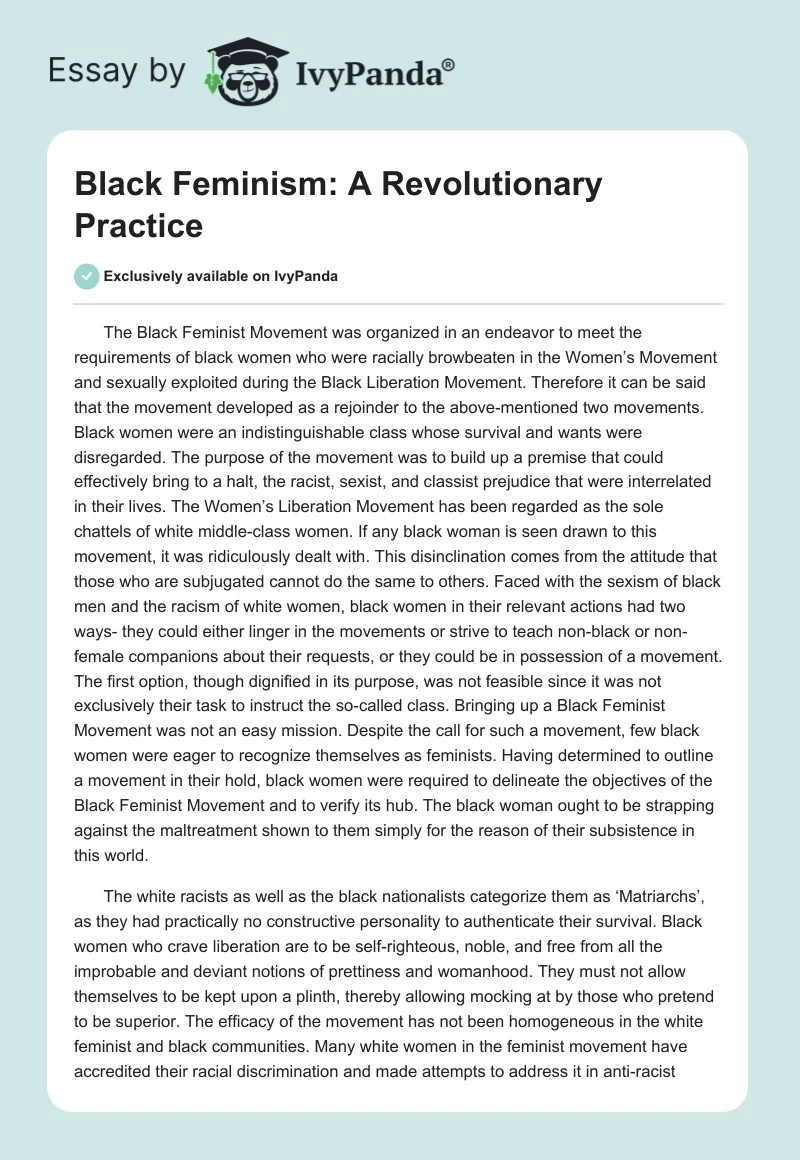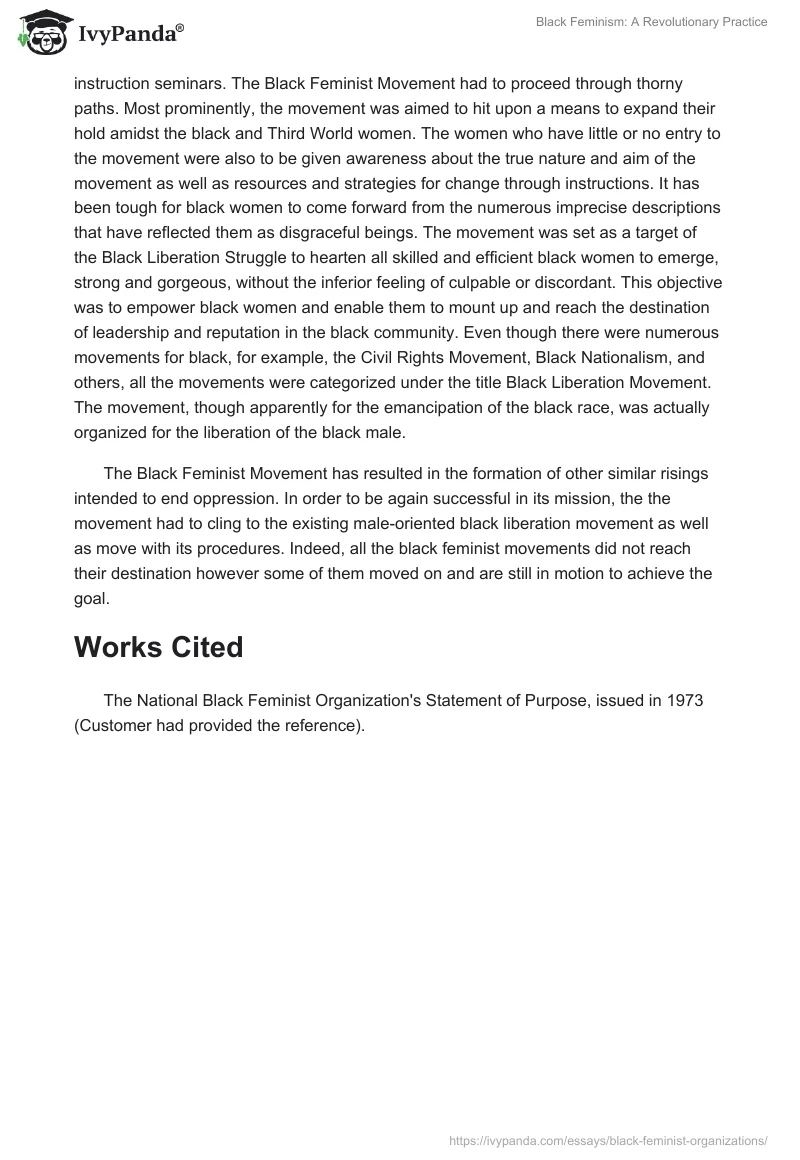The Black Feminist Movement was organized in an endeavor to meet the requirements of black women who were racially browbeaten in the Women’s Movement and sexually exploited during the Black Liberation Movement. Therefore it can be said that the movement developed as a rejoinder to the above-mentioned two movements.
Black women were an indistinguishable class whose survival and wants were disregarded. The purpose of the movement was to build up a premise that could effectively bring to a halt, the racist, sexist, and classist prejudice that were interrelated in their lives. The Women’s Liberation Movement has been regarded as the sole chattels of white middle-class women. If any black woman is seen drawn to this movement, it was ridiculously dealt with. This disinclination comes from the attitude that those who are subjugated cannot do the same to others. Faced with the sexism of black men and the racism of white women, black women in their relevant actions had two ways- they could either linger in the movements or strive to teach non-black or non-female companions about their requests, or they could be in possession of a movement.
The first option, though dignified in its purpose, was not feasible since it was not exclusively their task to instruct the so-called class. Bringing up a Black Feminist Movement was not an easy mission. Despite the call for such a movement, few black women were eager to recognize themselves as feminists. Having determined to outline a movement in their hold, black women were required to delineate the objectives of the Black Feminist Movement and to verify its hub. The black woman ought to be strapping against the maltreatment shown to them simply for the reason of their subsistence in this world.
The white racists as well as the black nationalists categorize them as ‘Matriarchs’, as they had practically no constructive personality to authenticate their survival. Black women who crave liberation are to be self-righteous, noble, and free from all the improbable and deviant notions of prettiness and womanhood. They must not allow themselves to be kept upon a plinth, thereby allowing mocking at by those who pretend to be superior. The efficacy of the movement has not been homogeneous in the white feminist and black communities. Many white women in the feminist movement have accredited their racial discrimination and made attempts to address it in anti-racist instruction seminars. The Black Feminist Movement had to proceed through thorny paths. Most prominently, the movement was aimed to hit upon a means to expand their hold amidst the black and Third World women.
The women who have little or no entry to the movement were also to be given awareness about the true nature and aim of the movement as well as resources and strategies for change through instructions. It has been tough for black women to come forward from the numerous imprecise descriptions that have reflected them as disgraceful beings. The movement was set as a target of the Black Liberation Struggle to hearten all skilled and efficient black women to emerge, strong and gorgeous, without the inferior feeling of culpable or discordant. This objective was to empower black women and enable them to mount up and reach the destination of leadership and reputation in the black community. Even though there were numerous movements for black, for example, the Civil Rights Movement, Black Nationalism, and others, all the movements were categorized under the title Black Liberation Movement. The movement, though apparently for the emancipation of the black race, was actually organized for the liberation of the black male.
The Black Feminist Movement has resulted in the formation of other similar risings intended to end oppression. In order to be again successful in its mission, the the movement had to cling to the existing male-oriented black liberation movement as well as move with its procedures. Indeed, all the black feminist movements did not reach their destination however some of them moved on and are still in motion to achieve the goal.
Works Cited
The National Black Feminist Organization’s Statement of Purpose, issued in 1973 (Customer had provided the reference).


